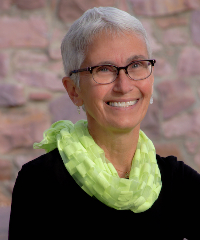Science Cafe Posts - Mission Mosquito
GLOBE Breadcrumb
- Home >
- Mission Mosquito >
- Science Cafe Posts
Banner and NavBar
Science Cafe Posts
Please complete your formal training to unlock the ability to create GLOBE Blogs.
See Training > User Roadmaps in the site navigation to learn more.Blogs

SEES Mosquito Mapper intern in the field, setting mosquito traps. Photo credit: Clara U. Something that has fascinated me in the research I have done so far is the vast impact that human activity has on the distribution of mosquito communities. Globalization and human travel are thought to be responsible for introducing many mosquito-borne diseases to unlikely areas, for example, spreading...

Dr. Caio França speaking at the Science Museum Oklahoma. Oklahoma is an ecologically diverse state in the Southern Plains region of the U.S. It is part of the central flyway for migratory birds, which makes it a sentinel location for West Nile Virus (WNV) surveillance. Why birds? Birds play a role in the WNV transmission cycle. Mosquitoes become infected with WNV when they bite an infected...

You may have heard the news- there is an exciting challenge this summer for GLOBE Observer users! The challenge follows in the spirit of early cartographers, Meriwether Lewis and William Clark, and you can win one of two ways. First, use GLOBE Observer to map as much land cover as possible in any GLOBE country by September 2. The top data collectors...

Our team has received several questions about what to do when mosquitoes are found in a natural habitat, such as an estuary or a wetland. When you use the Mosquito Habitat Mapper and your mosquito observations are finally logged, you are then prompted to do Step 4, “Eliminating Mosquito Breeding Habitat. By dumping or treating water you can significantly decrease the spread of...

With the beginning of the mosquito season comes the need for protecting individuals and communities from mosquitoes. When you use the GLOBE Observer Mosquito Habitat Mapper tool, you are not only providing useful surveillance information about when and where mosquitoes are found: you also are providing an important public service known as “source reduction.” Take a look around your home,...

Have app, will travel! I am reporting from the field, the campus of the University of Hawaii, Manoa (UHM). I am meeting with citizen scientists here who are collecting data using the GLOBE Observer app. I had the good fortune to meet Dr. Floyd Reed, a professor in the Department of Biology. His lab is involved in modifying strains of Culex mosquitoes so that they are unable to transmit avian...

If you have used the GLOBE Observer Mosquito Habitat Mapper, you know that the app allows you to identify your larva and apply its scientific name. You may have wondered why we use these names? For instance, Aedes aegypti’s common name is the “Yellow Fever Mosquito”. Why don’t we just use the common name when we talk about our work in this project? A unique name, used across many...

We’ve discussed how the mosquito story is a climate story and a human story, looking at climate history and human history. Contemporary climate change is now playing a role in the expansion of vector borne disease- not only in space but also in time. How many days are mosquitoes active in your city? You can find out by using this Disease Danger Day tool:...

Our mosquito story is a climate story. In the Early Holocene around 8200 years ago, the area that is today the Sahara Desert was much wetter and supported grassland vegetation. During the mid-Holocene, about 5000 years ago, changes in the monsoon began to dry out much of north Africa. This caused the Sahara to expand, and the yellow fever mosquito (Aedes aegypti) was forced to retreat to areas...

Welcome Message from Dr. Russanne Low, GLOBE Mission Mosquito Science Lead Welcome to the GLOBE Mission Mosquito Scientists’ Blog. This is the space on the campaign site where student scientists, citizen scientists of all ages, and full-time researchers discuss and explore how changing weather, extreme weather events, land cover modification, insect ecology, and even human behavior...





